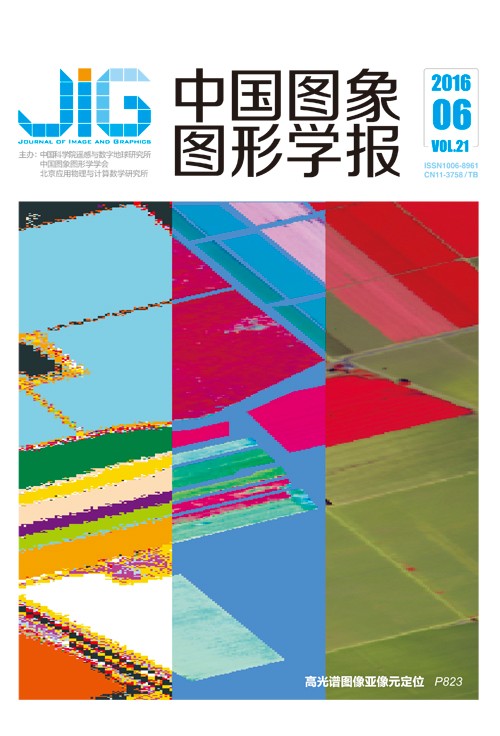
利用选择性模型不定时更新的视觉跟踪算法
摘 要
目的 在目标跟踪中,基本粒子滤波算法和传统模型更新策略在遮挡、光照变化以及自身旋转等情况下通常存在鲁棒性较差的问题。为解决该问题,提出一种基于选择性模型不定时更新的粒子滤波视觉跟踪算法。方法 本文算法在粒子滤波框架下,定时检测目标变化,采用最速梯度下降法判断更新时机。仅当目标本身逐渐姿态改变而不受背景干扰时更新目标模型;在发生遮挡或光照改变较大时则不更新,保持当前模型继续跟踪。结果 通过对示例视频的计算机视觉跟踪,在跟踪目标中心位置误差、覆盖率、精度及成功率比较上,本文算法均能表现出较优的实验结果,这表明:本文算法能够对目标模型进行选择性更新,与对比算法比较,总体能够更加有效解决视频中遮挡、光照变化以及自身旋转等情况下的鲁棒跟踪问题。结论 由于本文算法未考虑尺度,在尺度不变的多种复杂变化条件下,本文算法均具有较好的鲁棒性。
关键词
Robust visual tracking based on periodic updates of the selective model
Fan Shunyi, Guan Hua, Hou Zhiqiang, Yu Wangsheng, Dai Bo(The Information and Navigation Institute of Air Force Engineering University, Xi'an 710077, China) Abstract
Objective In target tracking, the particle filter and frame-by-frame updating of the model both have poor robustness in solving the problems of occlusion, illumination change, and self-rotation. To address these challenges, we propose a new visual object tracking method based on selective model updating without timing. Method Forcefully updating the model on a regular basis results in target distortion and tracking drift because such updates do not consider occlusion and other background interferences. Thus, we select a mechanism to ensure that the updated model is valid and accurate. Frame-by-frame detection can also extend the tracking time and reduce video tracking efficiency. We detect the object changes within a short period to prevent the model updates from significantly affecting real-time tracking, which is of practical significance. We detect the target changes regularly based on particle filter and use the steepest gradient descent method to determine the update time. The steepest gradient descent method can be used to determine whether or not the threshold point of background interference can be reached by comparing the pixel information errors of the target, the initial model, and the model. Result The model is intelligent enough to represent the target, whereas the tracking frame is closer to the ground truth than the other algorithms. The proposed model is also superior to others in terms of center position error, coverage, accuracy, success rate, and time. Thus, the problems of occlusion, illumination change, and self-rotation can be solved by updating the proposed model selectively. Conclusion The proposed method demonstrates excellent robustness in various scenarios under the scale-invariant condition because the dimension is not considered.
Keywords
object tracking particle filter the steepest gradient descent method determine the update time selective aperiodical model update
|



 中国图象图形学报 │ 京ICP备05080539号-4 │ 本系统由
中国图象图形学报 │ 京ICP备05080539号-4 │ 本系统由